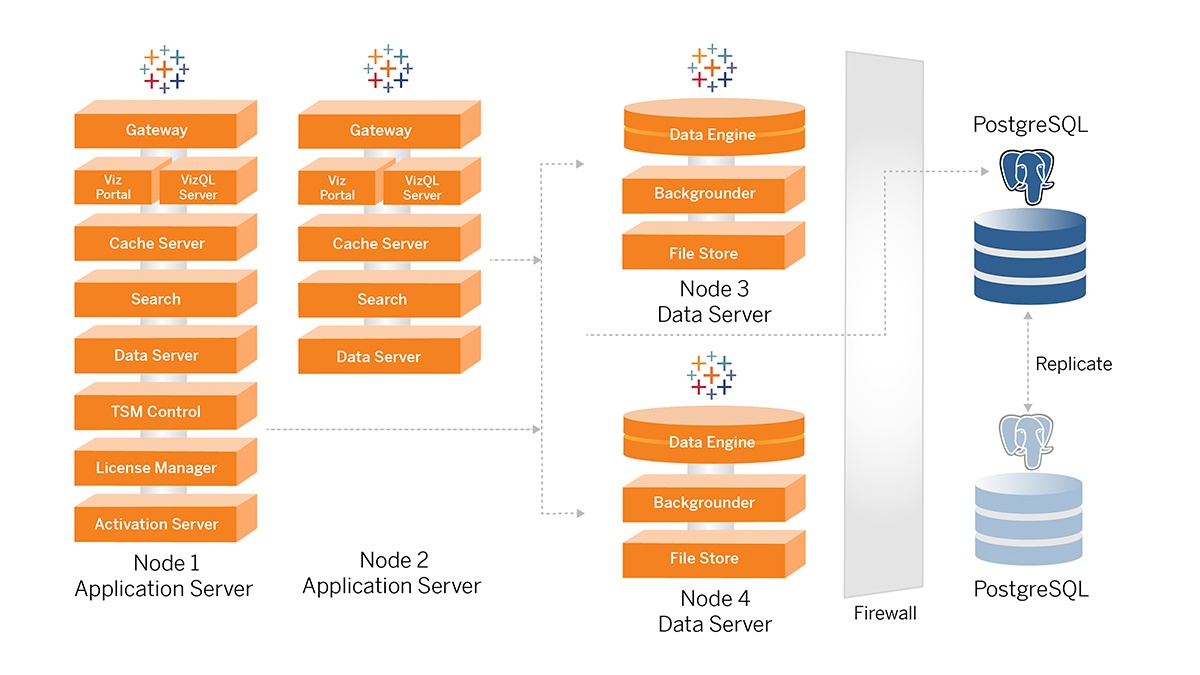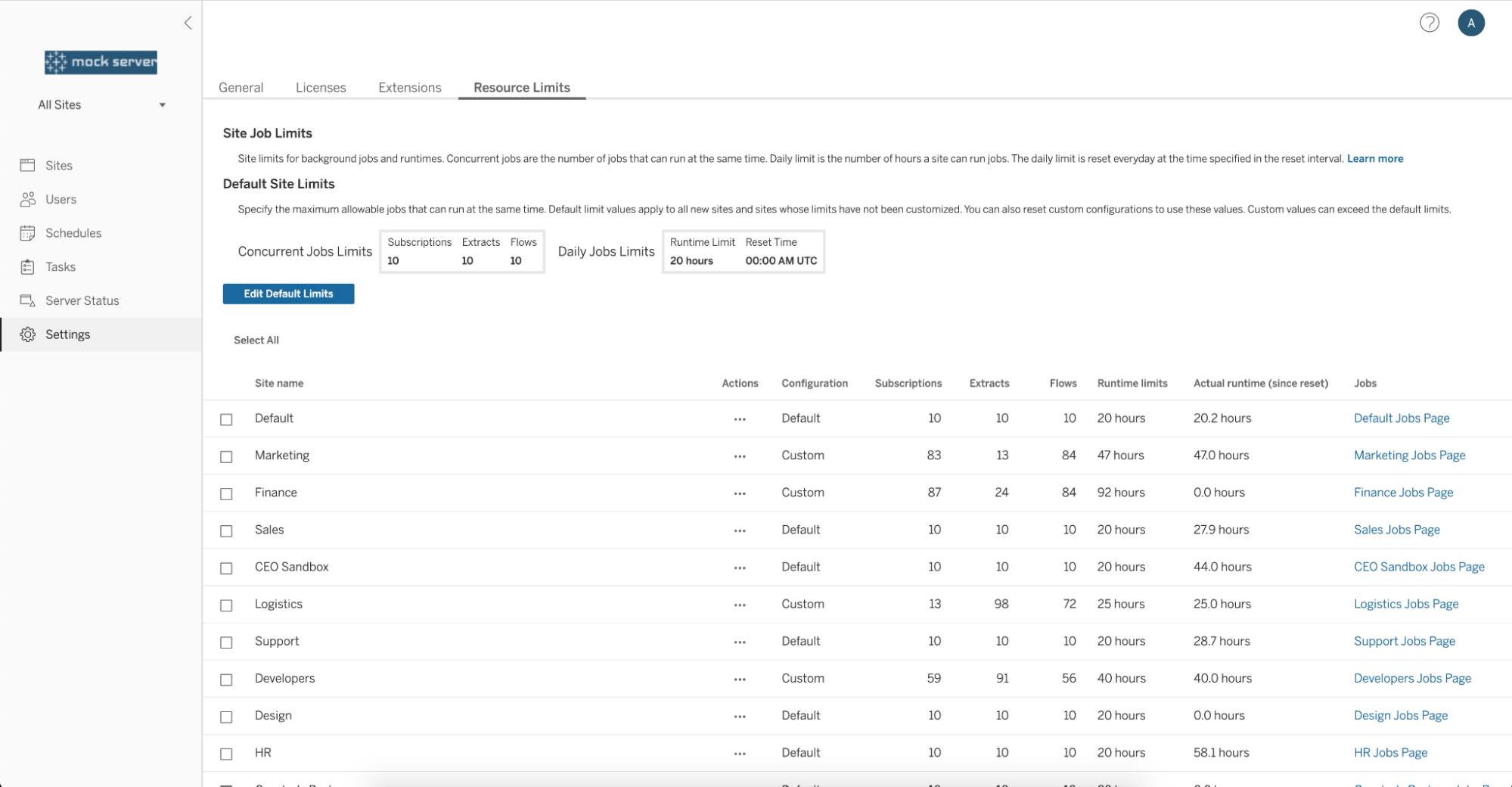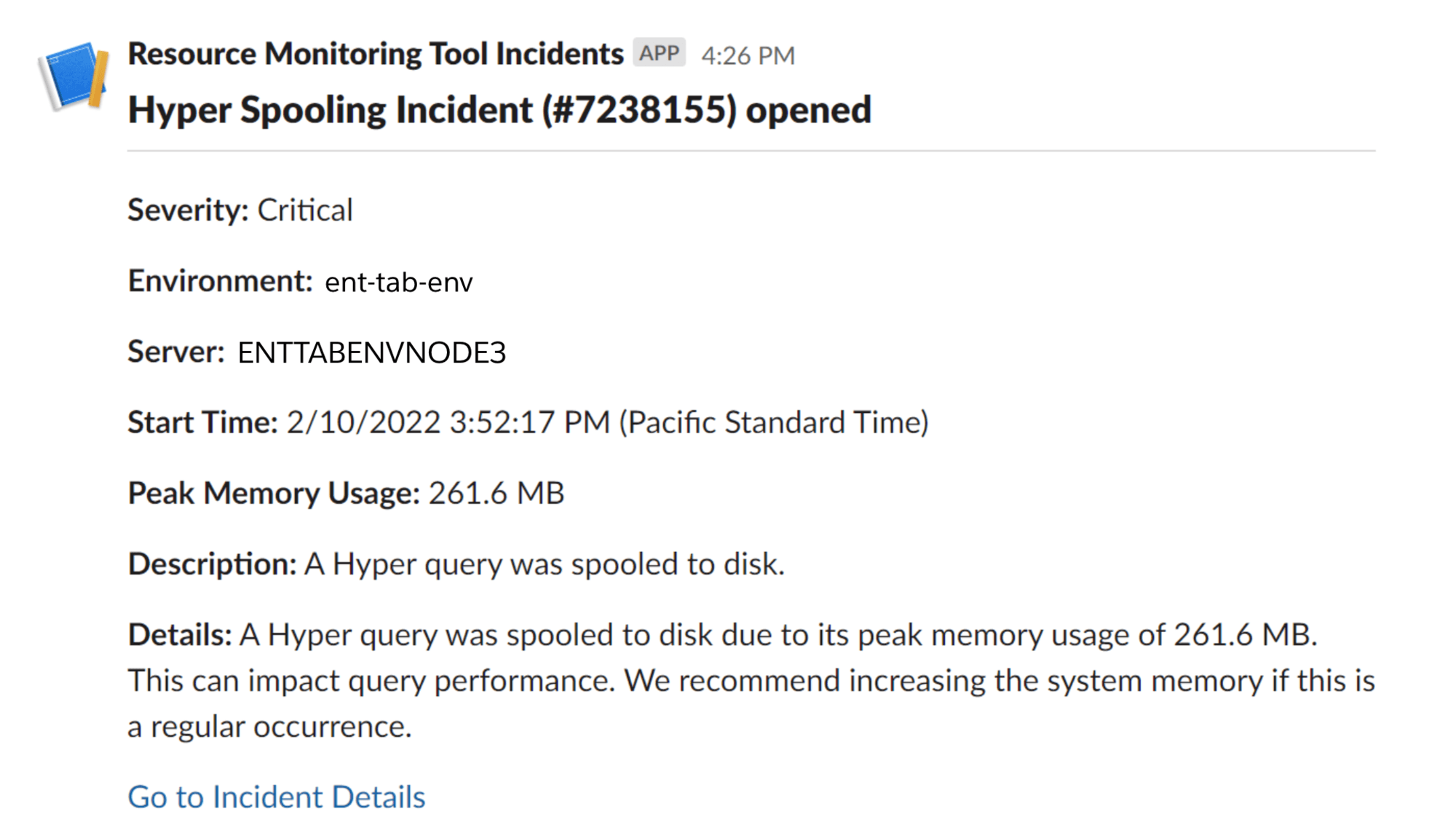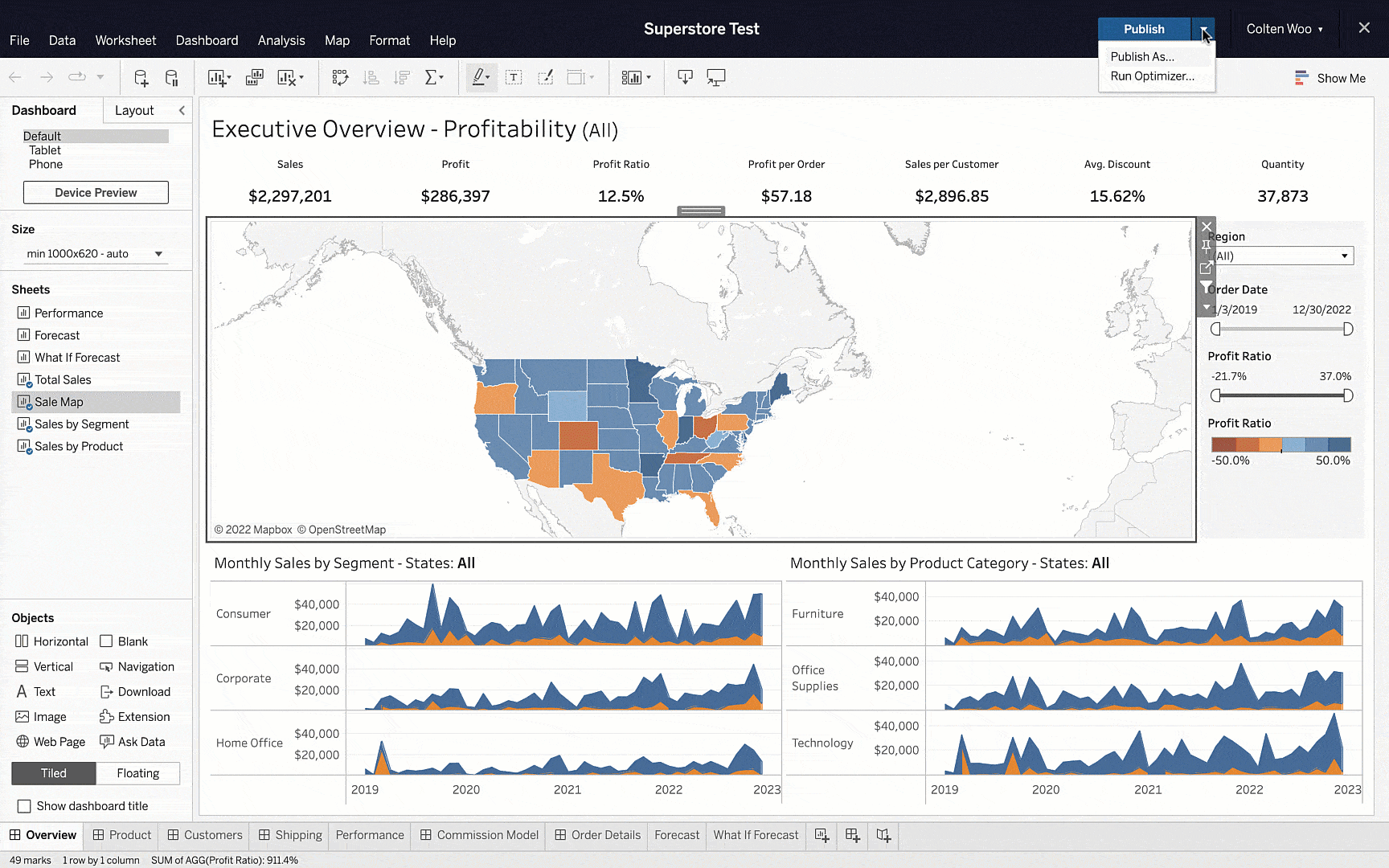Inside the release: Tableau 2022.1 for IT
The Tableau 2022.1 release includes exciting and powerful capabilities for IT and administrators to help you better manage and scale your analytics with increased efficiency. Let’s take a closer look at what’s included.
Deploy
Architect Tableau Server across subnets with Enterprise Deployment Guidelines
With the Enterprise Deployment Guidelines, enterprise architects have a reference architecture and prescriptive implementation guide for deploying Tableau to industry standards across availability, scalability, security, and performance.
For Tableau Server in version 2021.2.3 or later, the reference architecture has a tiered topology. Each layer of server application functionality is bound and protected by access-controlled subnets with secured access guidelines for admins, proxy integration (with browser, mobile, and desktop) and AuthN plugin enforcement.
Consistent with our philosophy of offering unparalleled flexibility and choice, the reference architecture is technology agnostic and platform independent. Your architects can meet the organization’s specific and unique requirements, whether you’re deployed on-premises or in the cloud, with virtual machines or containers.
To get started, read Tableau Server Enterprise Deployment Guide in Tableau Help.

Migrate to a new and improved identity data structure
Tableau 2022.1 includes a “silent” identity migration job that will move current system users to new Identity Service tables. The migration will not interrupt or interfere with anyone’s usage of Tableau, and allows net new installations to operate with the new Identity Service by default.
The modern identity structure not only enhances user data within the Tableau Server repository, but also helps resolve certain issues that stemmed from the legacy architecture. Plus, it provides the foundational data structure for us to release additional features that are frequently requested—including mixed mode authentication and multiple identity stores.
To learn more, read About the Identity Migration in Tableau Help.
Install the gateway process outside of Tableau Server
Many large enterprises deploy a reverse proxy in front of their web applications for greater security and scalability—and now you can do the same for Tableau Server. An admin can install an independent getaway process outside of Tableau Server, offering a fully supported, Tableau Server aware reverse proxy in your DMZ (perimeter network) and enhanced security and scalability of your Tableau Server Deployment.
To get started, read Tableau Server Independent Gateway in Tableau Help.
Monitor
Optimize the performance of job queues with Backgrounder resource limits
Many of our customers govern multiple Tableau sites with a set of shared resources. Often these sites are divided by business units, and sometimes one group’s usage can negatively impact others’ experiences in Tableau.
With Tableau 2022.1, we’ve made it easier for IT teams to better optimize the performance of Tableau Server. You can set limits on the number of background jobs that can run at the same time on a site, and specify the number of Backgrounder hours that a site can use to run jobs per day. Default limits can be applied to all sites, but you can also set custom limits to manage resources based on the specific requirements a site may have.
To get started, read Tableau Server Backgrounder Resource Limits in Tableau Help.

Resource Monitoring Tool now monitors Hyper spooling
Although Hyper is intended to run in memory, if a query runs out of resources, it will spool to disk to use resources there. In these scenarios, there may be performance impacts to your users and background tasks. Beginning with Tableau 2022.1, the Resource Monitoring Tool (part of Tableau Server Management) will proactively alert you if your infrastructure doesn't have enough memory for Hyper queries. Additionally, Hyper will write a “spooling” event to log files, so you can look back at prior queries to see which were driving memory usage.
To learn more, read Hyper Spooling Incidents in Tableau Help.
Get notifications from the Resource Monitoring Tool in Slack
Staying informed of the health of your Tableau Server deployment is important—but if you don’t have the right window or application open, you might miss a critical event. So why not get updates where you’re already in the flow of work? With Tableau 2022.1, you can choose to be notified via Slack, in addition to email, when the Resource Monitoring Tool (part of Tableau Server Management) has detected an issue with Tableau Server.
To get started, read Resource Monitoring Tool Server Configuration in Tableau Help.

Maintain
Boost dashboard performance with Workbook Optimizer and View Acceleration
The performance of your Tableau workbooks can make or break the analytics experience at the individual and organizational level. Slow-loading dashboards can frustrate your workforce, create a negative perception of your analytics program, and potentially impact overall system performance.
Workbook Optimizer exposes key design characteristics and evaluates them against best practices from the comprehensive Designing Efficient Workbooks whitepaper. Tableau Community leaders, customers, and internal experts have contributed years of knowledge and experience to the Workbook Optimizer, spanning seven categories of best practices. Every workbook author in your organization can consult the combined wisdom of Tableau’s robust community and publish performant analytics content with confidence—all without leaving the platform.
When IT identifies a slow dashboard via admin views, you can run the content through the Workbook Optimizer and work with the author to help fine-tune its design and improve its efficiency. The results page of the Workbook Optimizer displays a prioritized list of concrete guidance, educating authors on how the workbook design impacts performance. In the example below, the author is prompted to hide unused fields and review the visible workbook sheets and a long calculation.

In addition, View Acceleration can be applied to dashboards to speed up load times and improve the viewing experience. View Acceleration boosts performance by pre-computing dashboards according to user-defined data freshness policies or extract schedules. Once an administrator turns on this feature, workbook owners can enable or suspend acceleration for workbooks to match their consumption needs.
To learn more, read Workbook Optimizer and View Acceleration in Tableau Help.
Governance
Lineage graphs in Tableau Catalog now include virtual connections
Virtual connections, the new content type introduced in Tableau 2021.4, have been integrated with Tableau Catalog (part of Tableau Data Management) and appear in lineage graphs. This means someone performing impact analysis can easily see which authors, users, or upstream and downstream data assets are using specific virtual connections. This visibility can speed up collaboration or reduce disruption when changes occur.
To learn more, read Use Lineage for Impact Analysis in Tableau Help.
New and updated connectors with Tableau 2022.1
- Salesforce is available as a data source using virtual connections.
- We’ve made improvements to the Esri web data connector: you can connect Tableau to authenticated ArcGIS servers to extract location data from Esri via REST API.
- New connectors available on the Tableau Exchange: Denodo JDBC, Amazon DocumentDB, and Altinity Connector for Clickhouse.
Want more?
- Upgrade Tableau today to take advantage of these capabilities and many more.
- See the full list of new features from our latest releases, or get the highlights from 2022.1 in our release announcement.
- Visit the Ideas forum and let us know what you want to see next in the Tableau platform.
- Explore the Tableau Release Navigator to find out which version of Tableau has the mix of features your organization needs.
Related Stories
Subscribe to our blog
Get the latest Tableau updates in your inbox.








